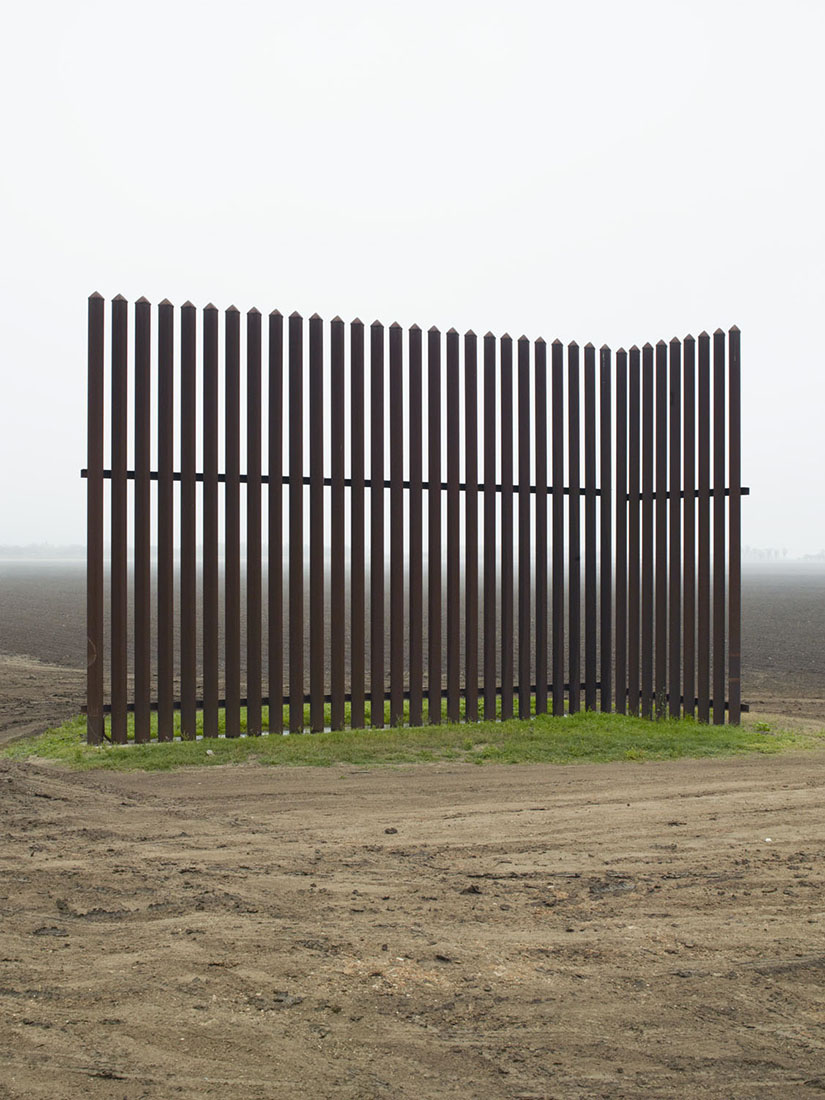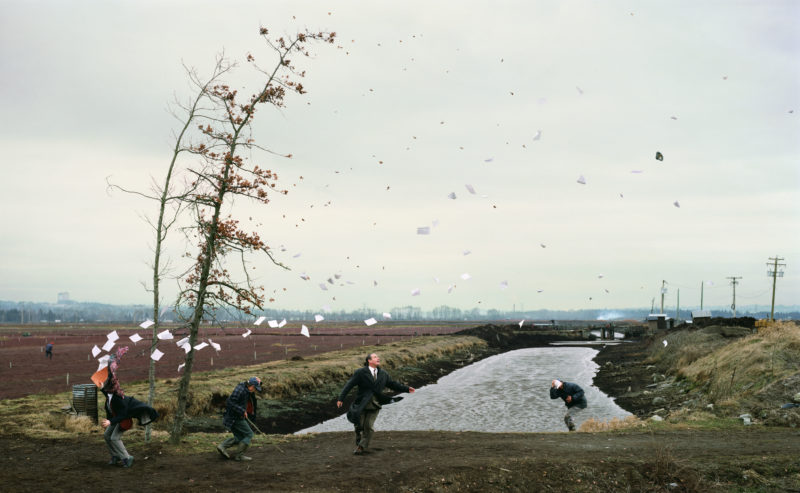
Introduction
Jeff Wall 1 is a Canadian Photographer that is known by many as one of the pioneers of conceptual photography. His photography skills and the corpus of theoretical texts make him an influential figure in postmodern art. Wall is well-known for staging photographs.
Jeff Wall’s A Sudden Gust of Wind, 1993
Jeff Wall’s A Sudden Gust of Wind (after Hokusai), 1993 is based on a woodcut Travelers caught in a sudden breeze at Ejiri by Japanese painter and printmaker Katsushika Hokusai. Jeff Wall fell for the allure of this Japanese scenery print. He reworked the composition to challenge the assumed narratives, one that is affiliated with certain times, places and people. In summary, this gigantic photographic image is entirely based on Hokusai’s woodcut.
His work is set in Typhoon season in Japan. Wall’s photograph depicts a flat and open landscape where four foreground figures are unmoving as they get washed by a sudden blast of air. The travelers struggle to hold on to their hats and several other possessions.
How was it created?
The Canadian Artist has transplanted Hokusai’s scene to the landscape around Vancouver. His photo shows a group of figures caught off-guard by an instant gust of wind. This work is constructed with the facilitation of over fifty images shot over several months. The images were then scanned and digitally processed so that Wall could achieve the desired composition. It’s almost spotless to detect the resemblance to Hokusai’s original. The artist himself likened the procedure to cinematography and not entirely on photography.
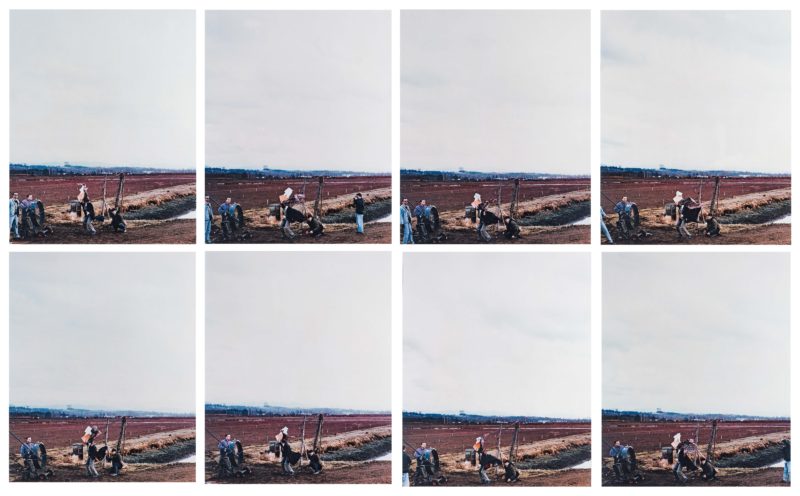
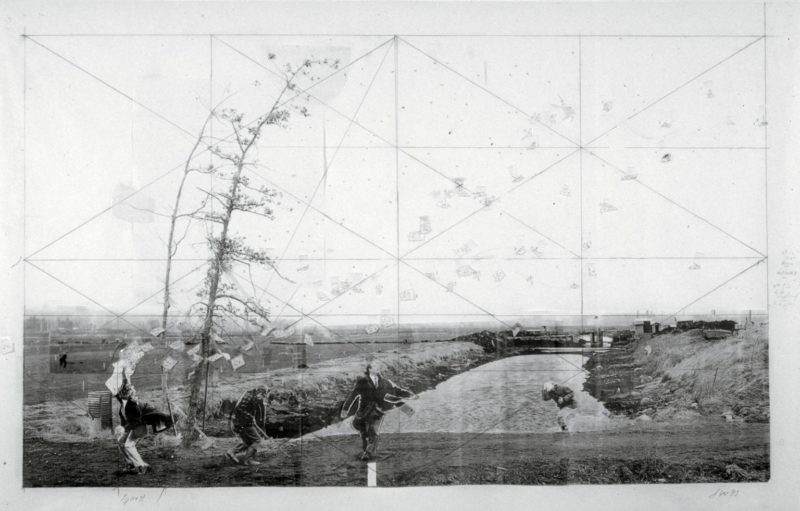
Jeff Wall’s background
At the beginning of his career, Jeff Wall began to depict scenes he had experienced individually in the streets. In the late 1980s, he shifted his attention from events he had seen to his dreams and imaginations. The subject matter depicted in several works was replaced by a metaphorical dimension. Later in the years, he began to use digital manipulation to college photographic constituents. This heightened the contrast between the real and functional world. Some of his most noticeable works include Picture for Woman, 1979, and The Destroyed Room, 1978.
Wall usually displays his large-scale 2 photo prints in front of a lightbox. The light comes from behind the photo rather than coming from the front. This has become his signature medium.
Hokusai’s print
Hokusai’s print shows two men clutch their hats to their heads. It also shows a third figure staring up into the sky as the hat is being carried away by the wind. On the left side of the photo, you will notice a woman with her scarf being blown away by the wind around her face. There are papers that are being gushed away by the wind.
The trees are also being overwhelmed by the wind. You will notice that most of them are bending due to the wind force. They are also releasing dead leaves, which intersperse with the floating papers. In the original print, the landscape is a curved path through a read-filled area. The landscape curves leading towards Mount Fuji in which is
noticeable in the far end.

Differences
On Jeff Wall’s version of Hokusai’s work, there’s a canal where the brownfields affixes. You will also notice some small shacks and concrete pillars and piping. There are telephone poles and signs of industrial farming. Actually, there’s nothing romantic about this landscape.
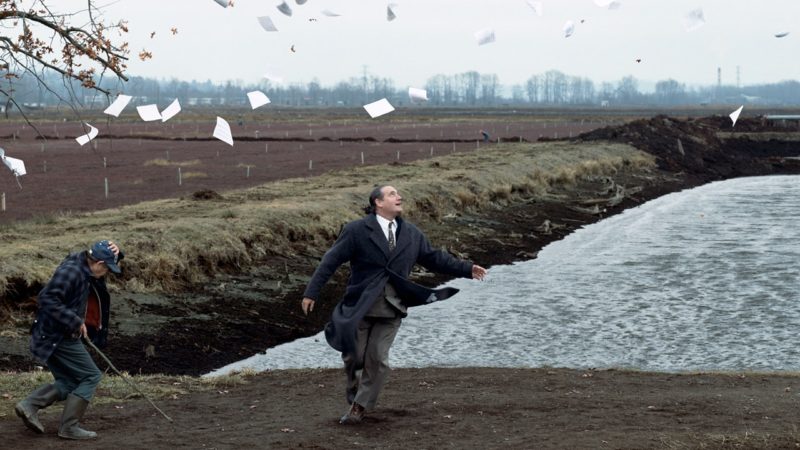
It’s easy to notice that the Hokusai’s image has some romantic connection. As a matter of fact, in the older image, Mount Fuji distracts and hypnotizes us entirely. This is exactly what romanticizes the scenery. Now the additional light color palette romanticizes the impression. Though Walls’ version is a remarkable interpretation of Hokusai’s original, the two are taking it in a different atmosphere. This shows an individual’s work. Each of the works can stand out on its own regardless of the inspiration.

If the two photos are placed together, it shows a scene that is frozen in time even when the elements are incongruous. These visual details beg for more questions than they answer. The viewers in both artworks are caught mid-story. Most of them are wondering why the people are gathered in the empty atmosphere. The viewers are also wondering why Wall’s scene is related to Hokusai’s.
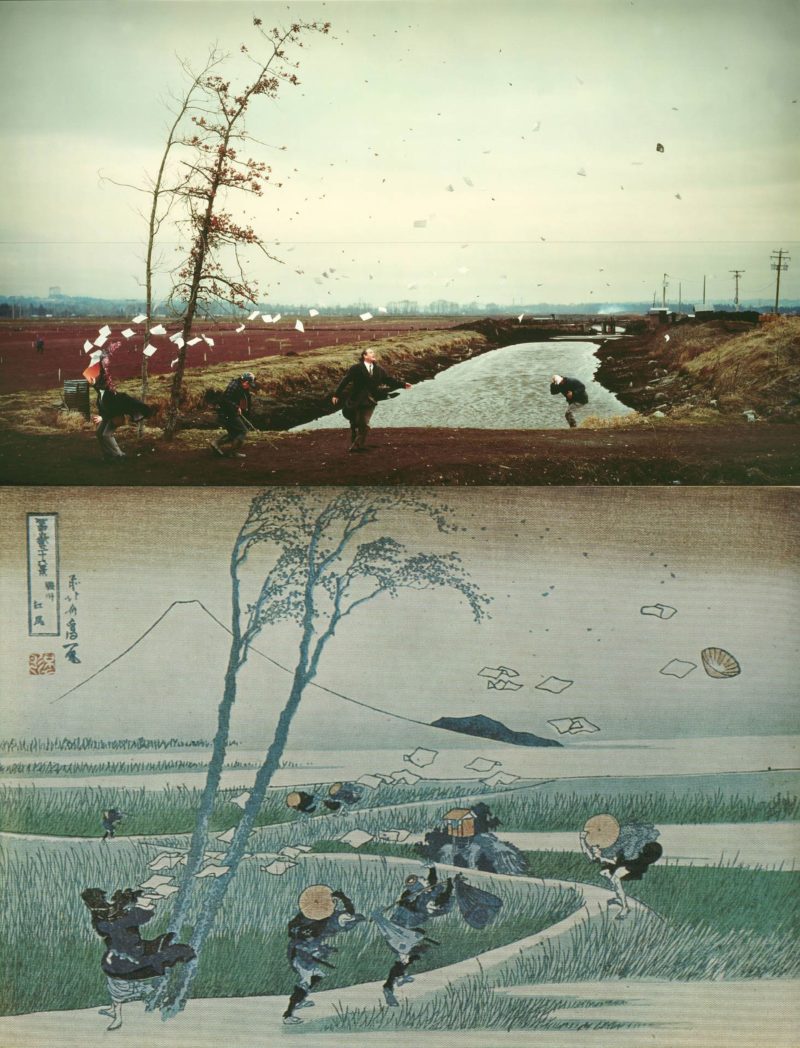
Bottom: Katsushika Hokusai – Suruga Ejiri, 1831
Analysis
This work continues techniques and themes first explored in Wall’s earlier photographs. The artwork adds significantly to the broader investigations of photography’s role in reality and creating fictional narratives.
Wall also attempts to mask the gaps that happened in the time between the original photographs and the traces of their separate frames, especially when they are combined all together in the final composition.
The photographer blurs the line between fiction and reality, as most of the viewers would notice. The photograph shows an imagined scene that never existed in reality, and the viewer is left to wonder what they are seeing.
Video: How much does Jeff Wall leave to chance?
8 min 21 sec
